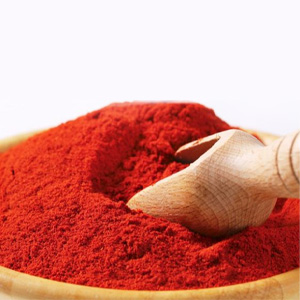- No. 268 Xianghe Street, Economic Development Zone of Xingtai city, Hebei 054001 China
- Byron@hbhongri.cn
chili powder and paprika
The Vibrant World of Chili Powder and Paprika A Culinary Exploration
Chili powder and paprika are two essential spices that have transcended culinary boundaries, adding depth, color, and flavor to dishes across the globe. While they share some similarities, they each offer unique characteristics that enhance various cuisines. This article explores the origins, uses, and differences between chili powder and paprika, highlighting their significant roles in the culinary arts.
Origins and Varieties
Chili powder is a blend of ground chili peppers and various spices, often including cumin, garlic powder, and oregano. Its roots can be traced back to the Americas, where indigenous populations cultivated different types of chili peppers for thousands of years. Over time, as trade routes expanded and cuisines blended, chili powder emerged as a versatile seasoning used in numerous dishes ranging from Mexican to Indian and beyond.
Paprika, on the other hand, has its origins in Hungary and Spain. It is made from ground red peppers, which may be sweet, smoky, or hot, depending on the variety used. Hungarian paprika is particularly renowned for its vibrant color and striking flavor profile, making it a staple in traditional dishes like goulash. Spanish paprika, or pimentón, often boasts a smoky flavor, thanks to the drying process of the peppers over an oak fire. Both types of paprika have gained international acclaim, making their way into kitchens all around the world.
Flavor Profiles and Culinary Uses
The flavor profiles of these two spices are distinct. Chili powder typically carries a robust heat that varies depending on the type of pepper used. The heat can range from mild to fiery, allowing chefs to tailor the spice level of their dishes. It is commonly used in chili con carne, stews, sauces, and rubs for meats, imparting a satisfying warmth and complexity.
Paprika, on the other hand, is less about heat and more about flavor and color. The sweetness of sweet paprika blends seamlessly into sauces, soups, and stews, while smoked paprika adds a depth of savory flavor that enhances grilled meats and roasted vegetables. It is often sprinkled on deviled eggs or used to garnish dishes like hummus, providing not just flavor, but also a splash of striking red that captures the eye.
chili powder and paprika

Health Benefits
Both chili powder and paprika are not only flavorful but also boast several health benefits due to their active compounds. Chili powder contains capsaicin, which is known for its anti-inflammatory properties and potential to boost metabolism. Additionally, it is rich in vitamins A and C, contributing to overall health and wellness.
Paprika, particularly the Hungarian variety, is loaded with antioxidants and vitamin E, which can support skin health and improve circulation. Its carotenoid content, which gives paprika its red hue, is believed to help combat oxidative stress and reduce inflammation.
Choosing the Right Spice
When selecting chili powder or paprika, it is essential to consider the desired flavor and heat level for your dish. For recipes that call for an intense kick, chili powder is the go-to choice. In contrast, when looking to add subtle sweetness or smokiness without overwhelming the dish, paprika is the ideal alternative.
Moreover, freshness is crucial in maximizing the flavor profiles of these spices. Whole dried chilies can be ground at home for the most potent chili powder, while high-quality paprika should retain its vibrant color and aroma. It’s advisable to store both spices in airtight containers away from light and heat to preserve their potency.
Conclusion
Chili powder and paprika are indispensable in the world of cooking, each bringing its unique flair to a myriad of dishes. Whether you’re looking to spice things up with chili powder or add a touch of color and flavor with paprika, understanding their origins and uses can elevate your culinary creations. In the ever-evolving landscape of global cuisine, these two spices stand out as symbols of rich cultural heritage and flavor innovation. Embrace their diversity, and let your kitchen be a playground for experimentation and delight!
-
Turmeric Rhizome Powder: A Golden Treasure from Roots to TableNewsJul.28,2025
-
The Versatile Application Of Crushed Red Hot Peppers: Lighting Up The Red Flames On The Dining TableNewsJul.28,2025
-
The Paprika: A Touch Of Vibrant Red In Color, Flavor, And CultureNewsJul.28,2025
-
Ground Turmeric: A Modern Examination of an Ancient SpiceNewsJul.28,2025
-
Capsicum Liquid Extract: Features, Applications, and ChallengesNewsJul.28,2025
-
Application of Capsicum Liquid Extract in FoodNewsJul.28,2025







